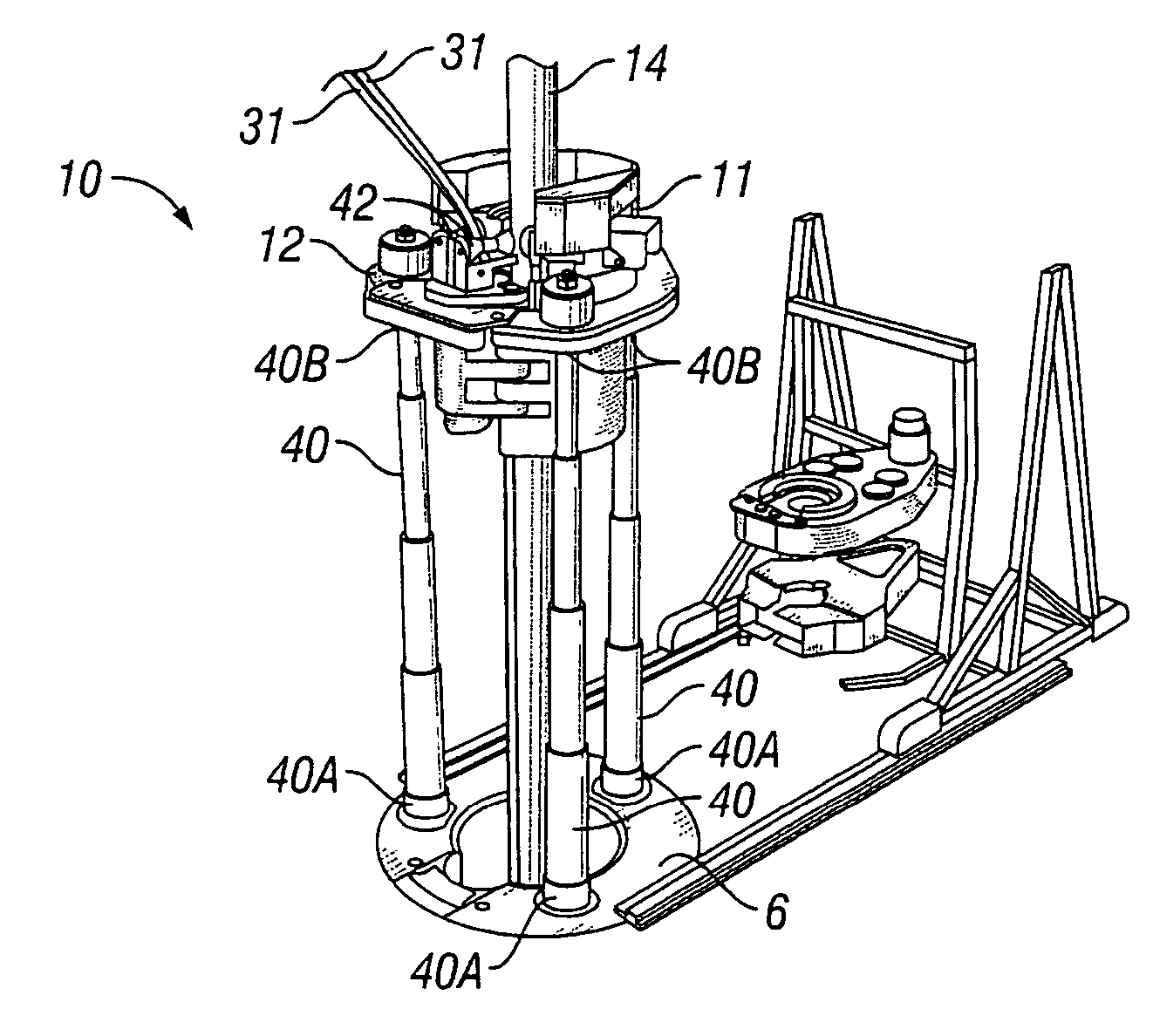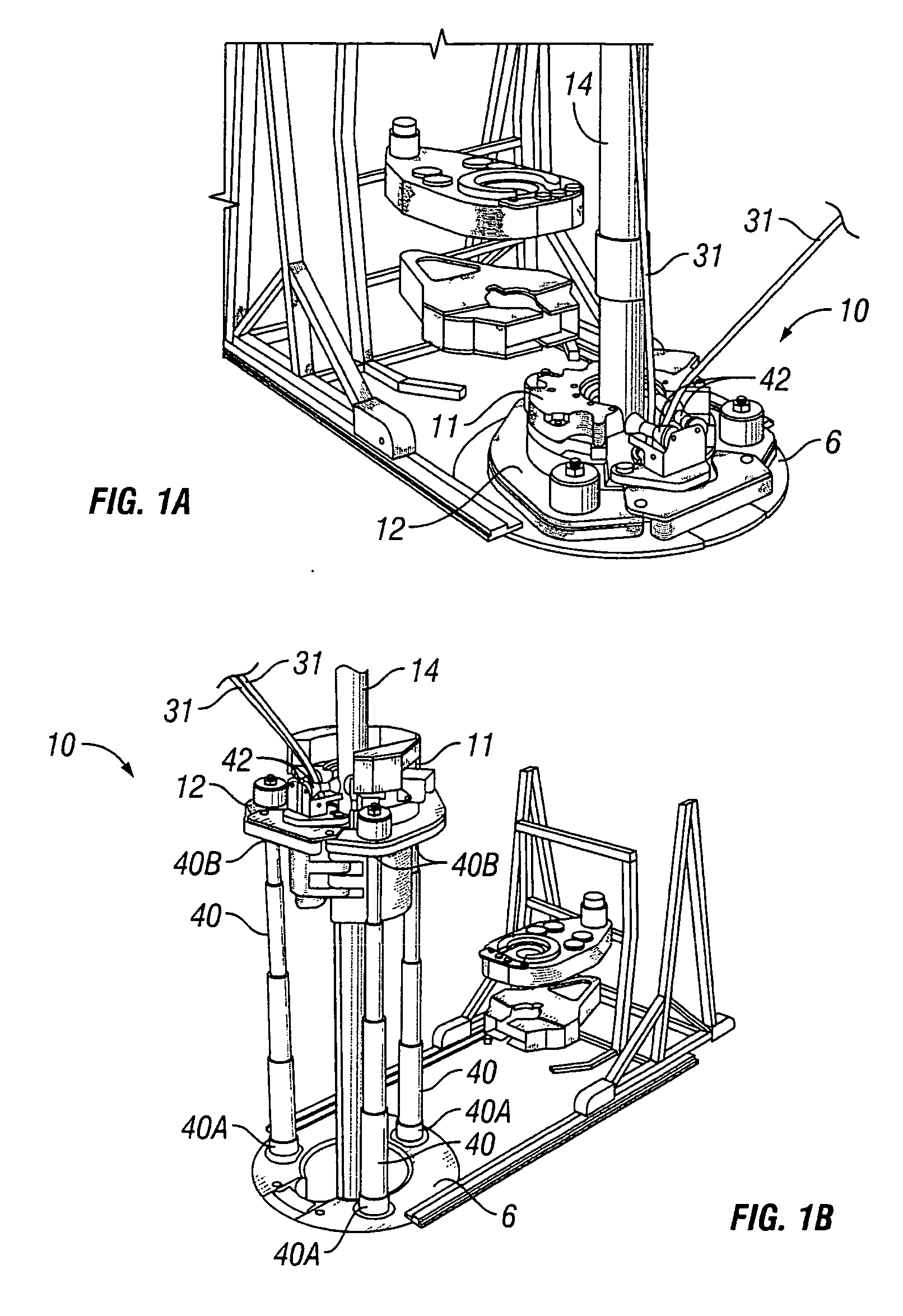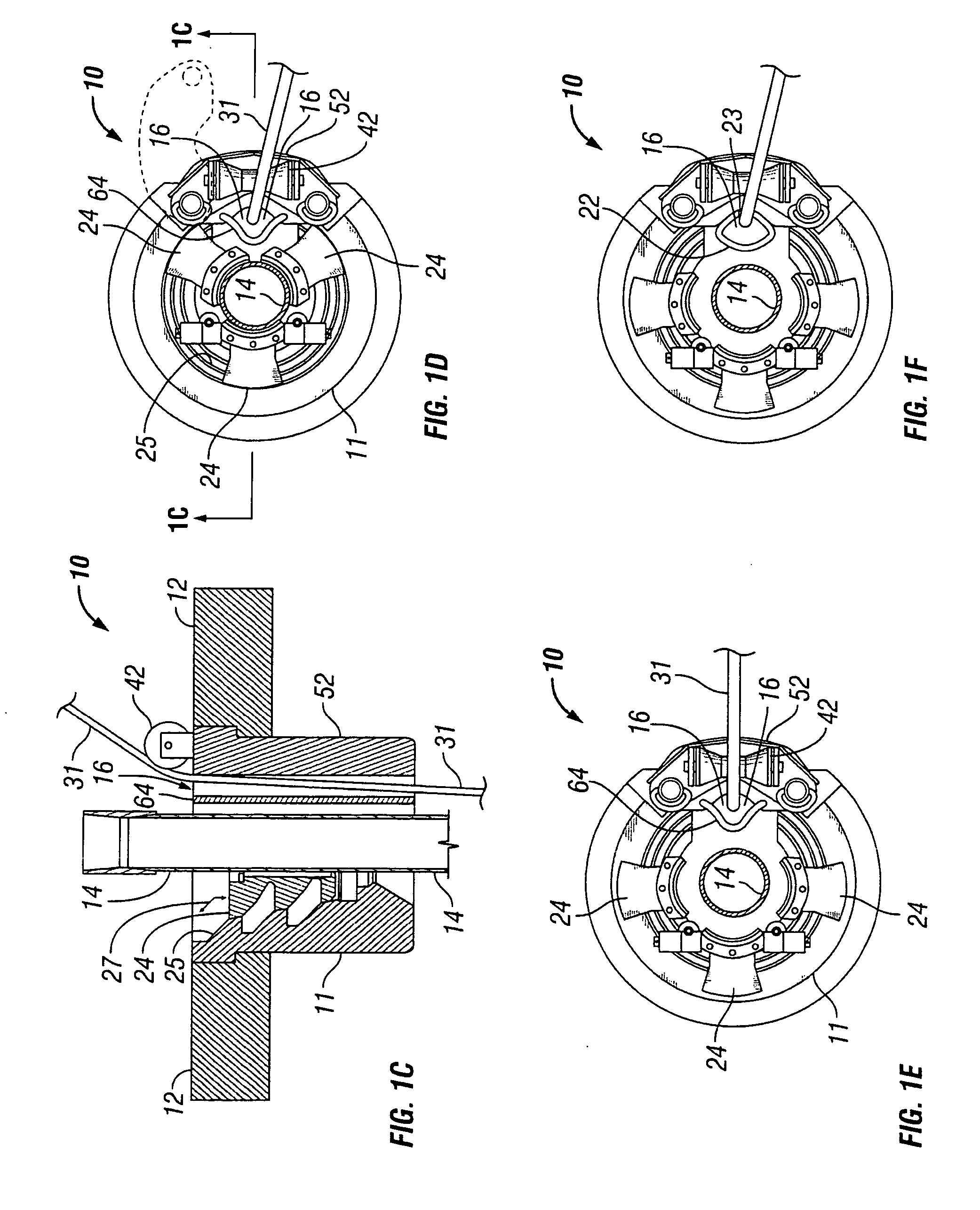Top feed of control lines to a reciprocating spider
- Summary
- Abstract
- Description
- Claims
- Application Information
AI Technical Summary
Benefits of technology
Problems solved by technology
Method used
Image
Examples
Embodiment Construction
[0045]FIG. 1A is a perspective view of one embodiment of a vertically reciprocating spider assembly 10 in its floor position with a spider 11 received in a reciprocating retainer 12 and control line guides 42 directing top-fed control lines 31 through the spider and downwardly along the length of the pipe string 14. The retainer 12 may be integral with the spider 11 or it may be a separate device adapted to supportably receive the spider 11.
[0046]FIG. 1B is a perspective view of the vertically reciprocating spider assembly 10 supporting the spider 11 in an elevated position to facilitate fastening of the control lines 31 to the pipe string 14. The retainer 12 is supportable with three hydraulically powered telescoping legs 40 angularly distributed around the periphery of the retainer 12 for even support. Any number of legs may be used so long as the spider is stable and the legs 40 do not significantly impede access to the pipe string for fastening the control lines. The legs 40 ar...
PUM
 Login to View More
Login to View More Abstract
Description
Claims
Application Information
 Login to View More
Login to View More - R&D
- Intellectual Property
- Life Sciences
- Materials
- Tech Scout
- Unparalleled Data Quality
- Higher Quality Content
- 60% Fewer Hallucinations
Browse by: Latest US Patents, China's latest patents, Technical Efficacy Thesaurus, Application Domain, Technology Topic, Popular Technical Reports.
© 2025 PatSnap. All rights reserved.Legal|Privacy policy|Modern Slavery Act Transparency Statement|Sitemap|About US| Contact US: help@patsnap.com



